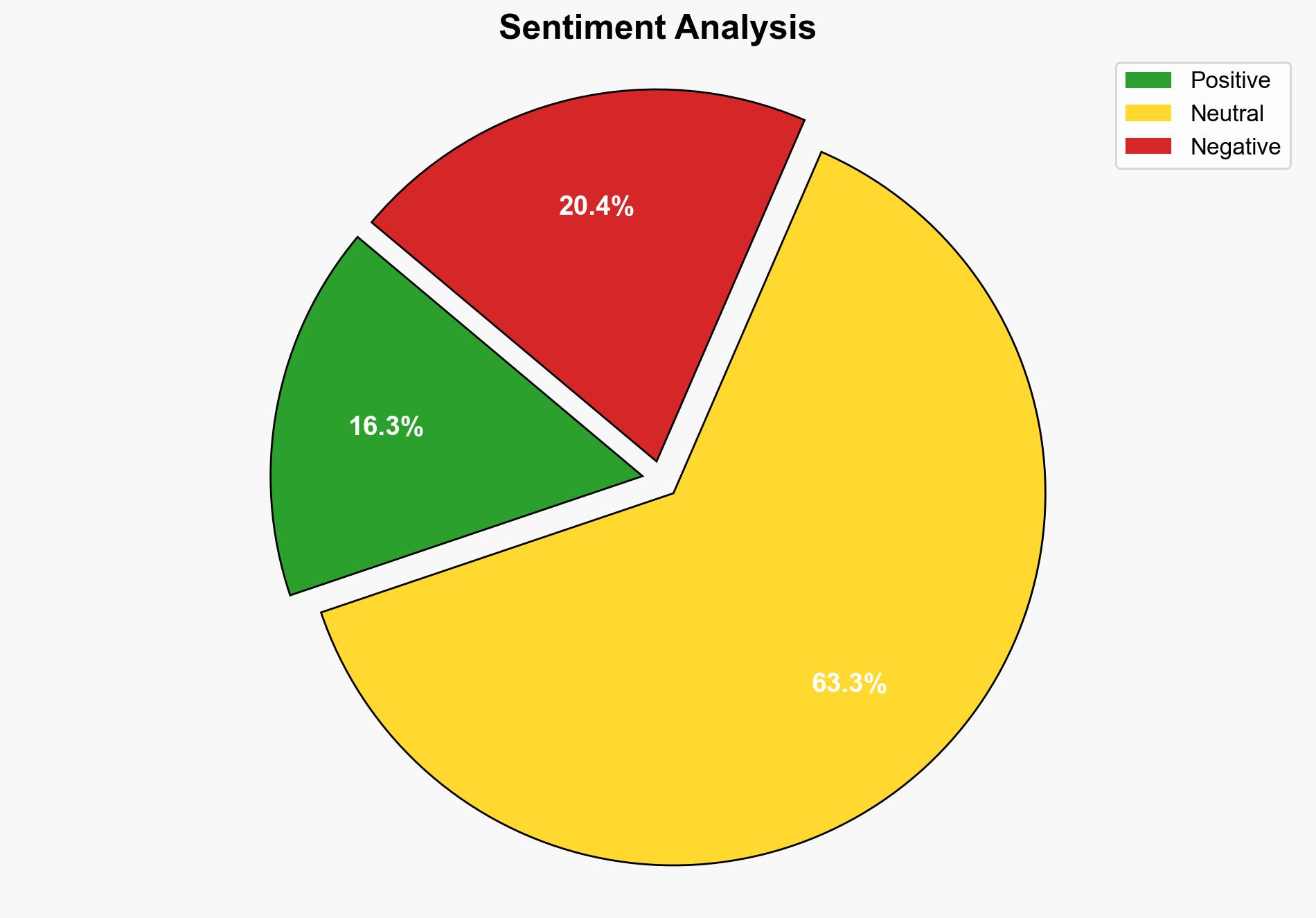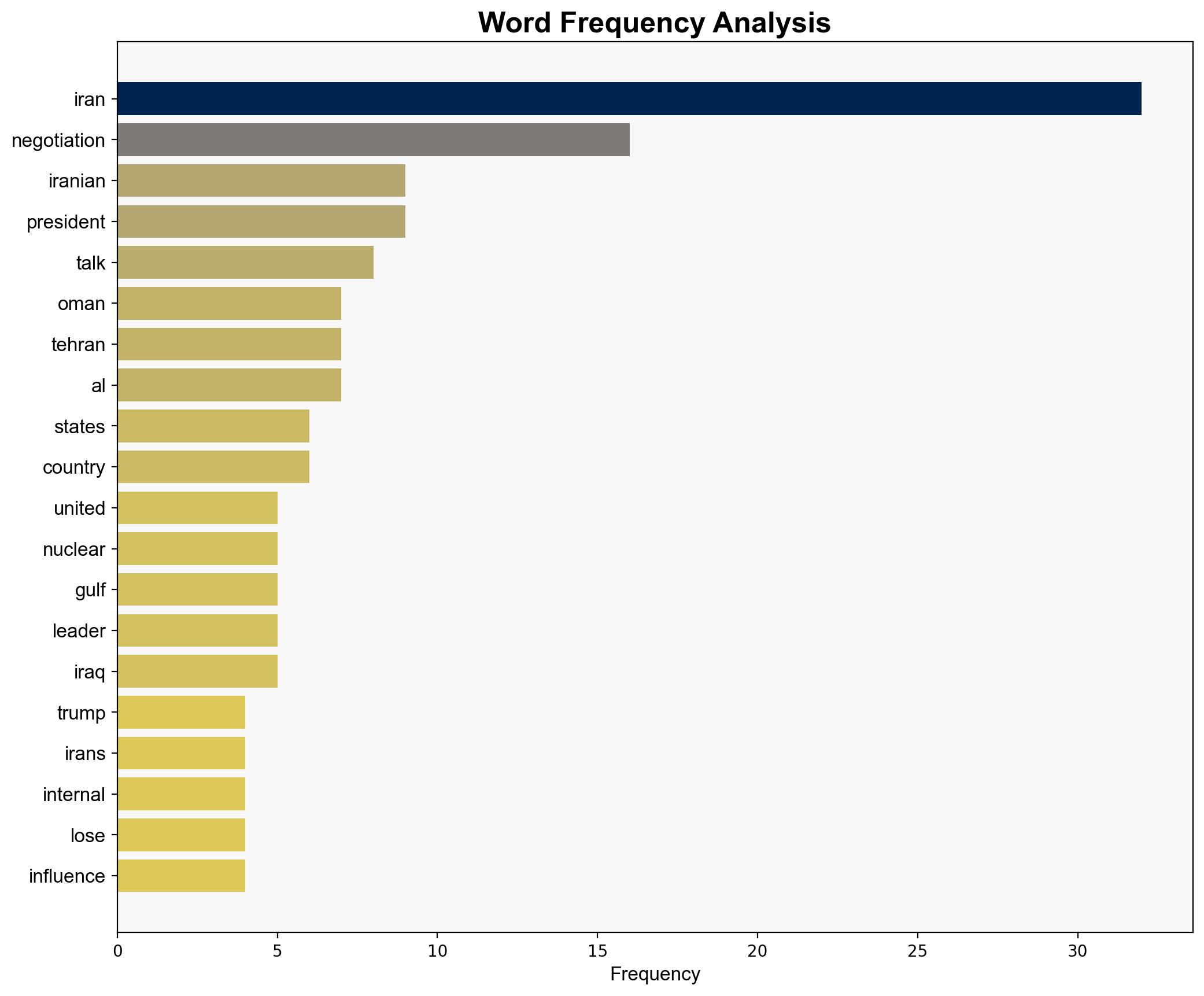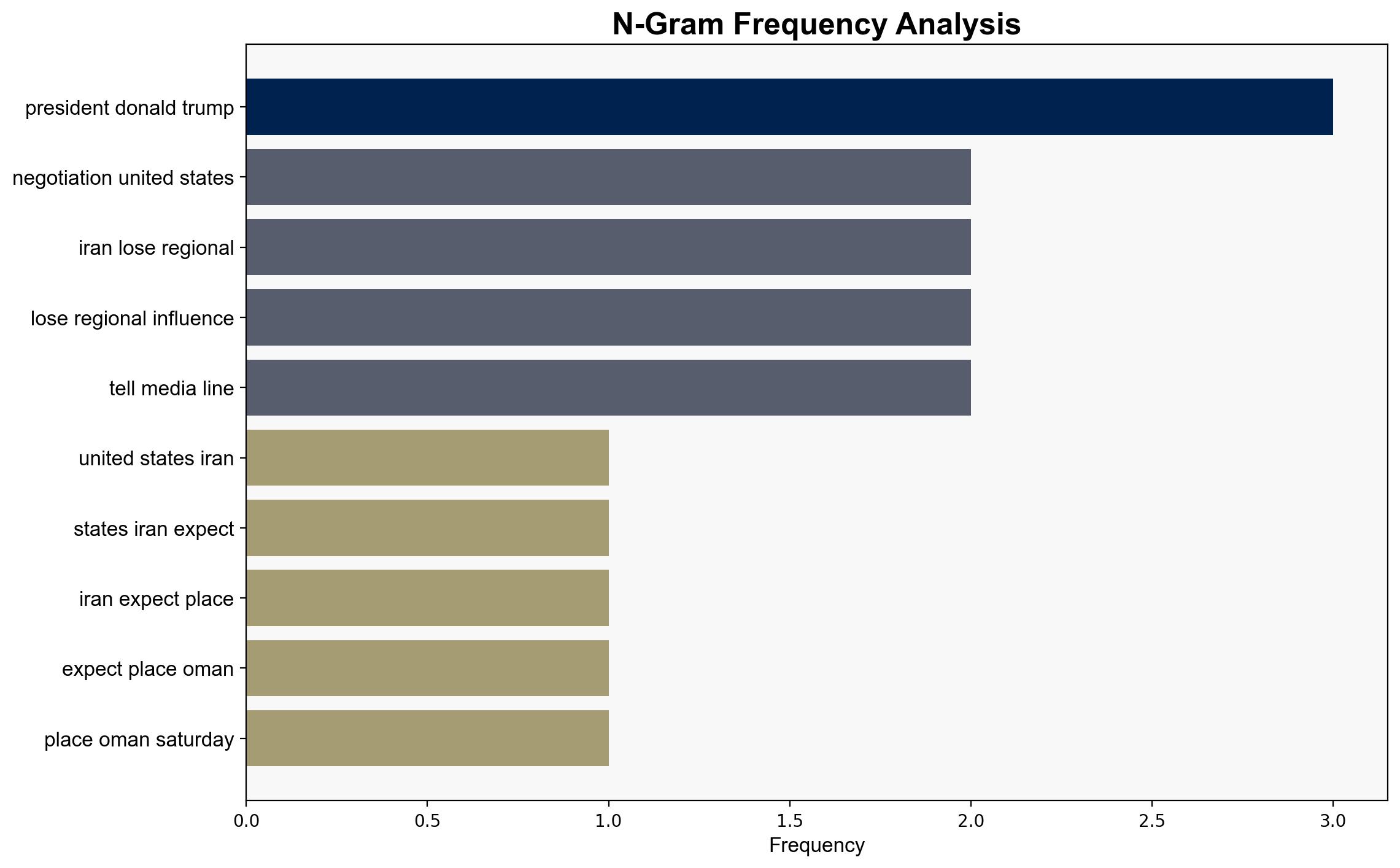Back to Muscat Oman is the Venue for last-chance US-Iran talks – The Jerusalem Post
Published on: 2025-04-11
Intelligence Report: Back to Muscat Oman is the Venue for last-chance US-Iran talks – The Jerusalem Post
1. BLUF (Bottom Line Up Front)
The upcoming negotiations in Oman between the United States and Iran represent a critical juncture in addressing the Iranian nuclear issue. The talks are complicated by regional instability and internal pressures within Iran. The potential for escalation, including military intervention, remains high if diplomatic efforts fail. Strategic recommendations include maintaining diplomatic channels, preparing for potential military contingencies, and monitoring regional proxy dynamics.
2. Detailed Analysis
The following structured analytic techniques have been applied for this analysis:
General Analysis
The negotiations in Oman are set against a backdrop of heightened tensions and diminished Iranian regional influence. The loss of key proxies in Gaza, Lebanon, Syria, and Yemen has weakened Iran’s strategic position. The internal economic crisis and divisions among Iranian leadership further complicate Tehran’s negotiating stance. The United States, under pressure to prevent nuclear proliferation, is leveraging sanctions and military threats to compel Iran to negotiate. The historical context of past negotiations in Oman adds a layer of complexity, with both sides wary of previous unfulfilled promises.
3. Implications and Strategic Risks
The primary risk is the potential for military conflict if diplomatic efforts fail, which could destabilize the region further. Economic sanctions on Iran’s oil sector could exacerbate global energy markets. The decline of Iranian proxies may lead to power vacuums and increased influence of rival groups, potentially destabilizing neighboring countries. The internal political situation in Iran could lead to unpredictable policy shifts, affecting regional and global security dynamics.
4. Recommendations and Outlook
Recommendations:
- Maintain open diplomatic channels with both Iran and regional allies to facilitate dialogue and reduce tensions.
- Enhance intelligence capabilities to monitor Iranian nuclear developments and proxy activities.
- Prepare contingency plans for potential military engagement, ensuring readiness to protect national and allied interests.
Outlook:
Best-case scenario: Successful negotiations lead to a renewed agreement, reducing regional tensions and stabilizing global energy markets.
Worst-case scenario: Diplomatic failure results in military conflict, causing widespread instability and economic disruption.
Most likely scenario: Prolonged negotiations with intermittent escalations, maintaining a status quo of tension and uncertainty.
5. Key Individuals and Entities
The report mentions significant individuals such as Donald Trump, Abbas Araghchi, Ali Khamenei, Masoud Pezeshkian, Ismail Haniyeh, Yahya Sinwar, Hassan Nasrallah, Bashar Assad, and Ahmed al-Sharaa. These individuals play crucial roles in shaping the geopolitical landscape and the outcomes of the negotiations.



